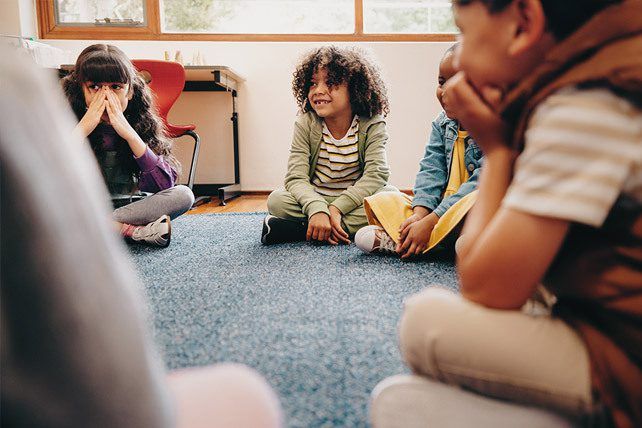We’ve all been there—staring down a new habit we know will make our lives better, but somehow, it feels like climbing a mountain. Whether it’s committing to a morning workout, eating healthier, or carving out time for mindfulness, building new habits can feel like a chore. But what if we could make the process feel less like work and more like play? What if we could foster new habits from a place of joy, connection, and curiosity? That’s where play healing comes in.
At Hobbiz, we’re all about embracing hobbies and activities that spark joy and help us grow. Today, I want to dive into how play healing—a concept rooted in using playful, connection-driven activities—can transform the way we build habits. This isn’t about forcing yourself into rigid routines or beating yourself up when you slip. It’s about tapping into creativity, community, and a sense of fun to make lasting change feel natural and fulfilling. Let’s explore how to foster new habits from a place of connection, with practical tips, personal insights, and a sprinkle of inspiration to get you started.
What Is Play Healing?
Play healing is the idea of using play—those joyful, exploratory, and often lighthearted activities we loved as kids—to nurture personal growth and emotional well-being. It’s about approaching challenges, like building new habits, with curiosity and creativity rather than pressure or perfectionism. When we talk about fostering habits from a place of connection, we mean connection to ourselves, to others, and to the activities that light us up.
Think back to when you were a kid, building a fort out of pillows or inventing a game with your friends. There was no checklist, no deadline—just the joy of creating and exploring. Play healing taps into that same energy. It’s about making the process of change feel less like a grind and more like an adventure. And when we tie that to habit-building, the results can be transformative.
Why does this matter? Because habits built on joy and connection are more likely to stick. Research shows that positive emotions, like those sparked by play, can increase motivation and make behaviors more sustainable. When we enjoy the process, we’re not just checking boxes—we’re building a lifestyle we love.
Why Connection Is Key to Habit-Building

Before we dive into the how, let’s talk about why connection is so powerful for creating new habits. Habits aren’t just about discipline; they’re about rewiring our brains to make certain behaviors feel automatic. And our brains respond beautifully to connection—whether it’s with others, with an activity we love, or with our own sense of purpose.
When we feel connected, we’re more likely to stay engaged. For example, studies show that people who exercise with a friend or in a group are more likely to stick with it than those who go it alone. Connection creates accountability, but it’s more than that—it makes the experience meaningful. Whether it’s sharing a laugh during a cooking class or feeling a sense of accomplishment after a creative project, connection fuels motivation.
Connection also helps us stay kind to ourselves. Too often, we approach habit-building with a harsh inner critic: “Why can’t I just stick to this?” Play healing flips that script. It invites us to approach ourselves with curiosity and compassion, like we’re rediscovering what makes us tick. That’s where the magic happens.
How to Use Play Healing to Foster New Habits

So, how do we actually do this? How do we take something as structured as habit-building and infuse it with play and connection? Here are five practical steps to get you started, each rooted in the principles of play healing. I’ve woven in some personal stories and examples to make this feel real and relatable—because at Hobbiz, we believe in keeping it human.
1. Start with What Lights You Up
The first step to fostering new habits through play healing is to choose activities that genuinely spark joy. If you hate running, don’t force yourself to jog every morning. Instead, think about what feels fun or fulfilling. Love music? Maybe your new habit is dancing to a favorite playlist for 20 minutes a day. Crazy about crafts? Try incorporating a daily sketching session to unwind.
For me, this hit home when I decided to build a habit of daily mindfulness. Meditation apps felt too clinical, so I leaned into something I loved as a kid: gardening. I started spending 10 minutes each morning tending to my plants, using that time to breathe deeply and notice the world around me. It wasn’t “meditation” in the traditional sense, but it became my way of grounding myself. The key is to pick something that feels like you.
Try this: Make a list of activities you love—things that make you lose track of time. Then, think about how you can tie one of those to the habit you want to build. For example, if you want to eat healthier and love storytelling, try hosting a weekly dinner where you experiment with new recipes and share the stories behind them.
2. Make It Social
Connection with others is a game-changer for habit-building. When we involve friends, family, or a community, we’re not just accountable—we’re sharing an experience. Play healing thrives on this sense of togetherness. Whether it’s joining a book club to read more or signing up for a pottery class to spark creativity, doing it with others makes it feel less like a task and more like a shared adventure.
I learned this when I wanted to get better at journaling. I’d tried for years to write daily, but it always fizzled out. Then I joined a local writing group where we’d meet once a week to share snippets of our journals. Suddenly, journaling wasn’t just about me sitting alone with a notebook—it was about connecting with others who loved words as much as I did. That group kept me going, and now I journal almost every day.
Try this: Find a friend or group who shares your interest or goal. If you want to exercise more, join a hiking club or invite a friend to try a new workout class with you. If you’re into creative hobbies, look for local meetups or online communities on platforms like Hobbiz to connect with others.
3. Gamify the Process
Play is all about fun, so why not turn your habit into a game? Gamification—adding elements like rewards, challenges, or progress tracking—can make habit-building feel exciting rather than daunting. This is where play healing shines, turning the mundane into something engaging.
For example, when I wanted to drink more water, I turned it into a game. I got a fun, colorful water bottle and set a goal to “collect” eight stickers (one for each glass of water) by the end of the day. It sounds silly, but seeing those stickers pile up made me feel like I was winning at something. Plus, it was a small way to celebrate my progress.
Try this: Create a points system, a progress chart, or a reward for your habit. Want to read more? Give yourself a “book badge” for every chapter you finish. Trying to eat more veggies? Challenge yourself to try a new vegetable each week and rate it like a food critic. Keep it light and playful.
4. Embrace Imperfection
One of the biggest barriers to building new habits is the pressure to be perfect. Play healing reminds us that growth doesn’t have to be flawless—it can be messy, experimental, and full of learning. When we approach habits with a playful mindset, we give ourselves permission to stumble and try again.
I saw this in action when I tried to build a habit of daily yoga. I’d miss a day and feel like I’d “failed.” Then I shifted my perspective: instead of aiming for a perfect streak, I started treating each session like an experiment. Some days, I’d do a full flow; others, I’d just stretch for five minutes while laughing at my wobbly balance. Letting go of perfection made yoga something I looked forward to, not something I dreaded.
Try this: Reframe “mistakes” as part of the game. If you skip a day, treat it like a plot twist in your habit-building story. Ask yourself, “What can I learn from this?” and jump back in with curiosity.
5. Reflect and Celebrate
Finally, take time to reflect on your progress and celebrate your wins, no matter how small. Play healing is about savoring the journey, not just the destination. When we pause to acknowledge what’s working, we strengthen our connection to the habit and to ourselves.
I like to end each week with a quick reflection: What went well? What felt fun? What do I want to try next? When I started my gardening-as-mindfulness habit, I’d jot down little moments—like the smell of fresh basil or the way the morning light hit my plants. Those reflections made the habit feel deeply personal and worth continuing.
Try this: Keep a “joy journal” where you note one thing each day that felt good about your habit. It could be a moment of connection, a small win, or just a funny memory. Celebrate milestones, too—treat yourself to something small, like a coffee date with a friend or a new book, when you hit a goal.
Why Play Healing Works
Play healing isn’t just a feel-good concept—it’s backed by science. Positive psychology research shows that emotions like joy, curiosity, and connection release dopamine, which helps reinforce new behaviors. When we enjoy the process, our brains start to associate the habit with pleasure, making it easier to stick with over time. Plus, play reduces stress, which can otherwise derail our efforts.
At Hobbiz, we’ve seen this in our community. From people rediscovering their love for painting to others finding joy in group hikes, play healing transforms the way we approach growth. It’s not about forcing change—it’s about inviting it in with open arms.
Bringing It All Together
Building new habits doesn’t have to feel like a slog. By tapping into play healing, we can make the process joyful, connected, and deeply personal. Start with activities you love, invite others along, gamify the experience, embrace imperfection, and celebrate your progress. These steps don’t just help you build habits—they help you build a life that feels vibrant and fulfilling.
So, what’s one habit you’ve been wanting to try? Maybe it’s learning a new hobby, moving your body more, or carving out time for self-care. Whatever it is, approach it with the spirit of play. Connect with yourself, with others, or with the joy of the activity itself. You might just find that the habits you build become some of your favorite parts of the day.
What’s your next step? Share your thoughts in the comments below or join the Hobbiz community to connect with others who are embracing play healing. Let’s make habit-building an adventure worth taking!
